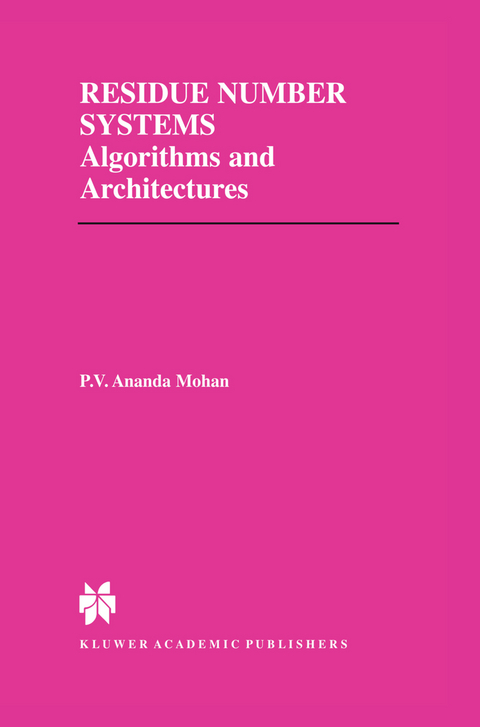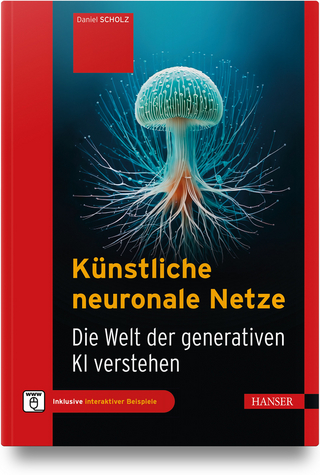
Residue Number Systems
Kluwer Academic Publishers (Verlag)
9781402070310 (ISBN)
1 Introduction.- 1.1 Historical survey.- 1.2 Basic definitions of RNS.- 1.3 Addition operation in RNS.- 1.4 Conclusion.- 2 Forward and Reverse Converters for General Moduli Set.- 2.1 Introduction.- 2.2 Mixed Radix Conversion based techniques.- 2.3 CRT based conversion techniques.- 2.4 Binary to RNS conversion techniques.- 2.5 Conclusion.- 3 Forward and Reverse Converters for General Moduli Set {2k-l,2k,2k+l}.- 3.1 Introduction.- 3.2 Forward conversion architectures.- 3.3 Reverse converters for the moduli set {2k-1, 2k, 2k+1}.- 3.4 Forward and Reverse converters for the moduli set{2k, 2k-l, 2k-1-l}.- 3.5 Forward and reverse converters for the moduli sets {2n+l, 2n,2n-l}.- 3.6 Conclusion.- 4 Multipliers for RNS.- 4.1 Introduction.- 4.2 Multipliers based on index calculus.- 4.3 Quarter square multipliers.- 4.4 Taylor's multipliers.- 4.5 Multipliers with in-built scaling.- 4.6 Razavi and Battelini architectures using periodic properties of residues.- 4.7 Hiasat's Modulo multipliers.- 4.8 Eueithy and Bayoumi modulo multiplication technique.- 4.9 Brickell's algorithm based multipliers and extensions.- 4.10 Stouraitis et al architectures for (A.X + B) mod mi realization.- 4.11 Multiplication using Redundant Number system.- 4.12 Conclusion.- 5 Base Extension, Scaling and Division Techniques.- 5.1 Introduction.- 5.2 Base extension and scaling techniques.- 5.3 Division in residue number systems.- 5.4 Scaling in the Moduli set {2n-1, 2n, 2n+1}.- 5.5 Conclusion.- 6 Error Detection and Correction in RNS.- 6.1 Introduction.- 6.2 Szabo and Tanaka technique for Error detection and Correction.- 6.3 Mendelbaum's Error correction technique.- 6.4 Jenkins's Error correction techniques.- 6.5 Ramachandran's Error correction technique.- 6.6 Su and Lo unified technique for scaling and error correction.- 6.7 Orto et al technique for error correction and detection using only one redundant modulus.- 6.8 Conclusion.- 7 Quadratic Residue Number Systems.- 7.1 Introduction.- 7.2 Basic operations in QRNS.- 7.3 Modified quadratic residue number systems.- 7.4 Jenkins and Krogmeier implementations.- 7.5 Taylor's single modulus ALU for QRNS.- 7.6 Conclusion.- 8 Applications of Residue Number Systems.- 8.1 Introduction.- 8.2 Digital Analog Converters.- 8.3 FIR Filters.- 8.4 Recursive RNS filter implementation.- 8.5 Digital frequency synthesis using RNS.- 8.6 Multiple Valued Logic Based RNS designs.- 8.7 Paliouras and Stouraitis architectures using moduli of the form rn.- 8.8 Taheri, Jullien and Miller technique of High-speed computation in rings using systolic Architectures.- 8.9 RNS based implementation of FFT structures.- 8.10 Optimum Symmetric Residue Number System.- 8.11 Conclusion.- 9 References.
| Reihe/Serie | The Springer International Series in Engineering and Computer Science ; 677 |
|---|---|
| Zusatzinfo | XIII, 253 p. |
| Sprache | englisch |
| Maße | 155 x 235 mm |
| Themenwelt | Informatik ► Theorie / Studium ► Algorithmen |
| Naturwissenschaften ► Physik / Astronomie ► Mechanik | |
| Technik ► Elektrotechnik / Energietechnik | |
| ISBN-13 | 9781402070310 / 9781402070310 |
| Zustand | Neuware |
| Informationen gemäß Produktsicherheitsverordnung (GPSR) | |
| Haben Sie eine Frage zum Produkt? |
aus dem Bereich


